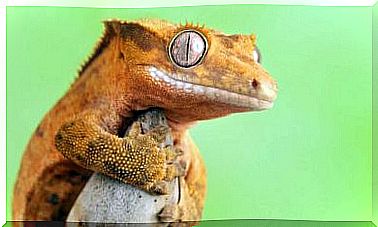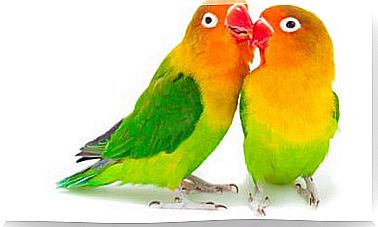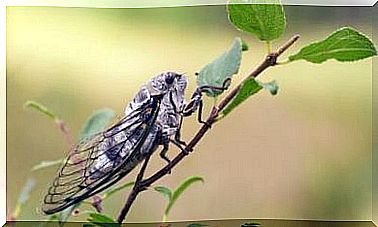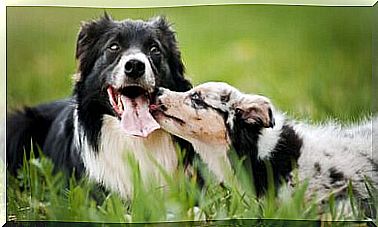The Horned Lizard: A Reptile That Cries Blood
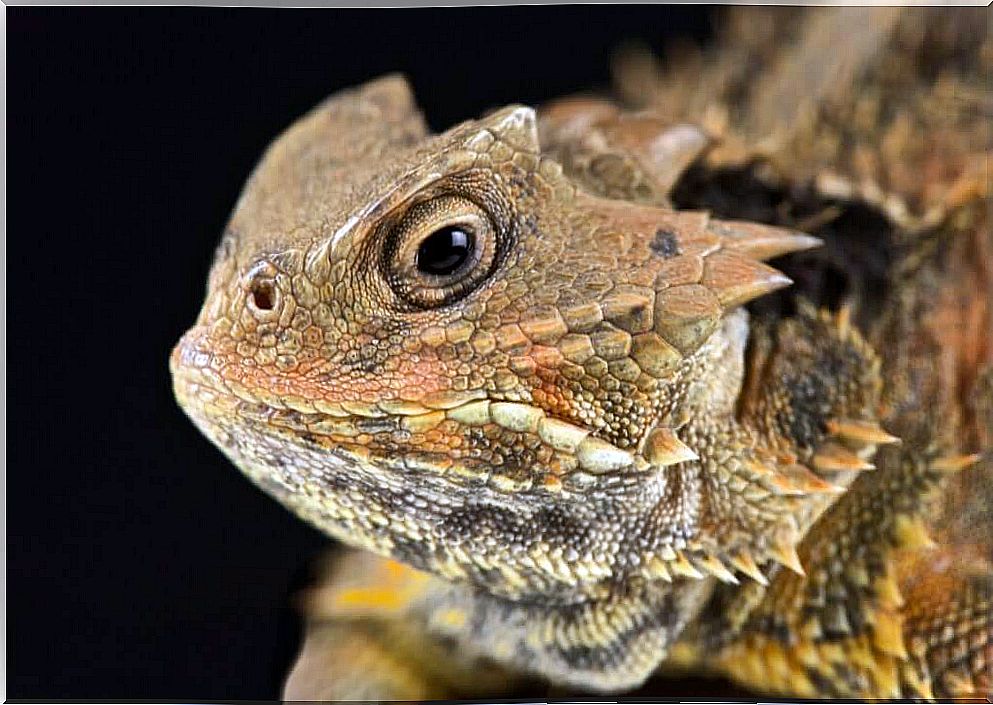
To date, there are 20 known species of horned lizard, all in the genus Phrynosoma . Each of them is distinguished by the color, size, quantity and arrangement of the horns and thorns along the back.
Most are the size of a deck of cards, with broad, flat bodies and short, squat legs. When they run, they do their best, but they just aren’t built for speed.
Horned lizards are undoubtedly made to defend themselves. They have to be, as many predators will try to eat them. Some species of horned lizard are recognized for squirting a reeking stream of blood from their eyes when cornered.
Where can we find a wonderful horned lizard?
Horned lizards live mainly in dry places: from Guatemala and Mexico, through the deserts of Arizona and California, to the dry grasslands of southern Canada. Generally, they are prey to hawks, shrikes, roadrunners, snakes, coyotes, foxes, wolves, lynx and even carnivorous rats. In fact, in desert areas, any animal that sees it would eat it.

a master of hiding
Camouflage is, without a doubt, your first line of defense. Horned lizards match their colors with their surroundings, blending in with the flecked brown or gray of mud. In fact, some species mimic inedible objects. This is the case of the round-tailed horned lizard, almost indistinguishable from the rocks in which it hides when its back curves and its legs are bent.
The freezing and the nerves of steel
Undoubtedly, many predators detect their prey when they move. The horned lizard knows this and has mastered the art of immobility. It’s surprising to know that the arrangement of the horns on the edge of its body breaks the shadows they cast on the ground, like an invisibility cloak.
In a nerve test, when a predator approaches, the lizards are reluctant to move. They only do so after assessing the danger, after carefully considering their opponent and what the appropriate defense might be.
The strategy to adopt depends on the opponent
Canids, like dogs, use teeth and claws to cut their prey into small pieces. Snakes swallow their food whole. Meanwhile, a rat will prefer to nibble on the skull to reach the brain.
Whip snakes are fast and actively hunt their prey. The stout horned lizard wouldn’t be able to escape your attack, so it opts to camouflage and stay quiet. However, rattlesnakes do not chase, they wait for the prey to approach before attacking.
So when a horned lizard encounters a rattlesnake, it runs for its life, knowing that the elongated predator is unlikely to follow. While no defense is foolproof, in general, standing in front of a whip snake and running away from a rattlesnake are a horned lizard’s best bets.
If the horned lizard is cornered, all is not lost
Even under difficult circumstances, the horned lizard will have some cards up its sleeve. If the predator is a snake or birds, they will have to swallow the prey whole. And this prickly reptile is not going to facilitate this process.
When the time comes, the horned lizard will either curl up on its front legs and unfold its ribs to form a dorsal shield or swell its torso to be as wide as possible. Surprisingly, this technique works. There have been cases of a whip snake giving up, simply because the lizard could not fit in its mouth.
Of course, sometimes camouflage and armor aren’t enough, and the predator eats a horned lizard anyway. But even so, sometimes they perform one last act of defiance: it’s not unheard of for a horned lizard to lodge in the throat or stomach of a bird or snake, killing its predator.
the reptile that cries blood
Finally, there is the horned lizard’s best-known defense: the cry of blood. This strategy is reserved for two groups of predators: cats and canids, which include dogs, coyotes and wolves.
The process is very simple. A bag under the lizard’s eyes, the ocular sinus, swells as it fills with blood. The lizard withstands a sudden increase in pressure and blood spurts so hard that it can reach up to six feet.
This gives them a chance to release their blood, which these hunters do not like. As soon as it reaches the mouth, the attacker shakes his head, salivates profusely and tries to expel him. They take about 15 minutes to recover.

Why do blood jets work?
Blood contains a chemical repulsive to the taste buds of dogs and felines. The blood defense is most effective when administered directly into the mouth rather than the eyes or nose.
This could explain why horned lizards tend to wait until the last second, when they’re already in their attackers’ jaws, before spitting blood.
Lizards probably get the unpleasant taste in their blood from a compound in their food. That’s because they eat highly poisonous ants.
Horned Lizard: A Born Survivor
To conserve amphibians and reptiles, we must understand their life history. Only from understanding is it possible to plan the recovery of species and their ecosystems. Research and appropriate outreach are essential to achieving this goal.

